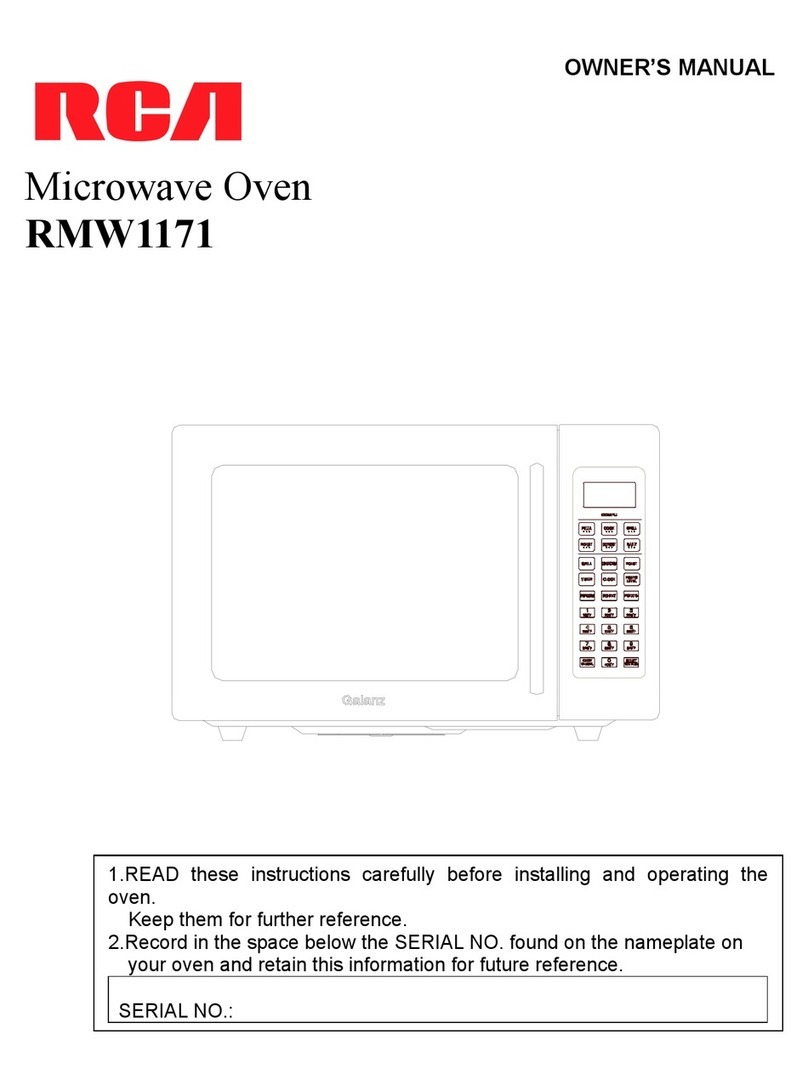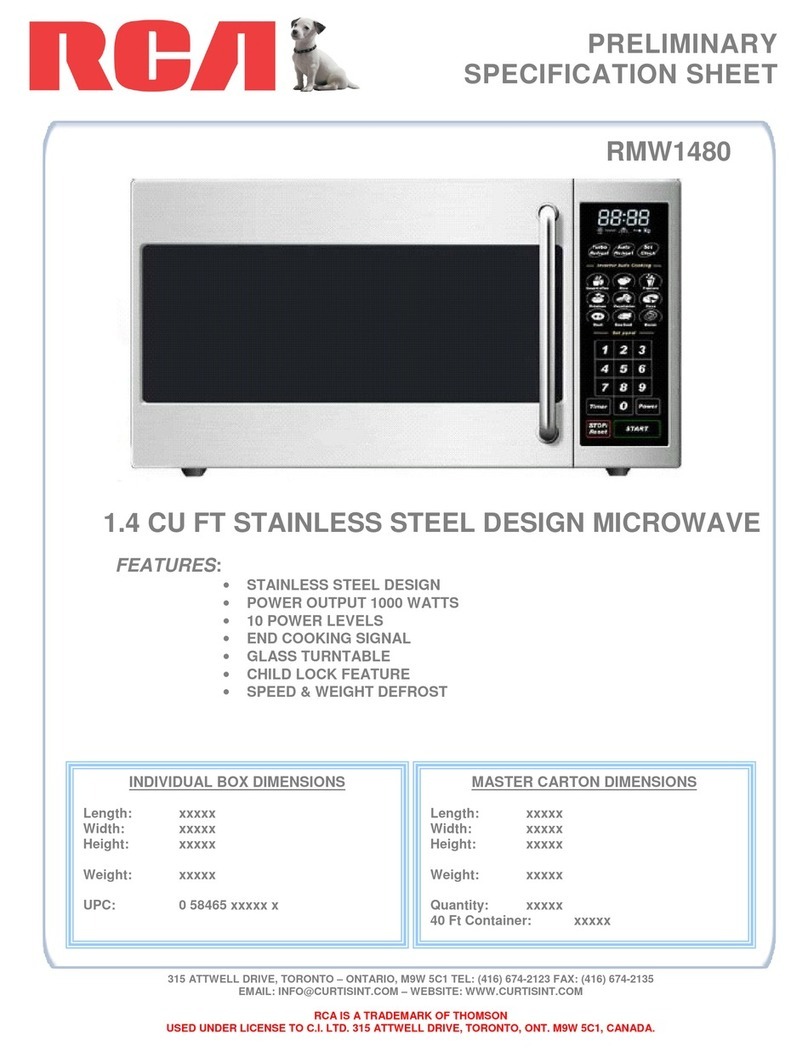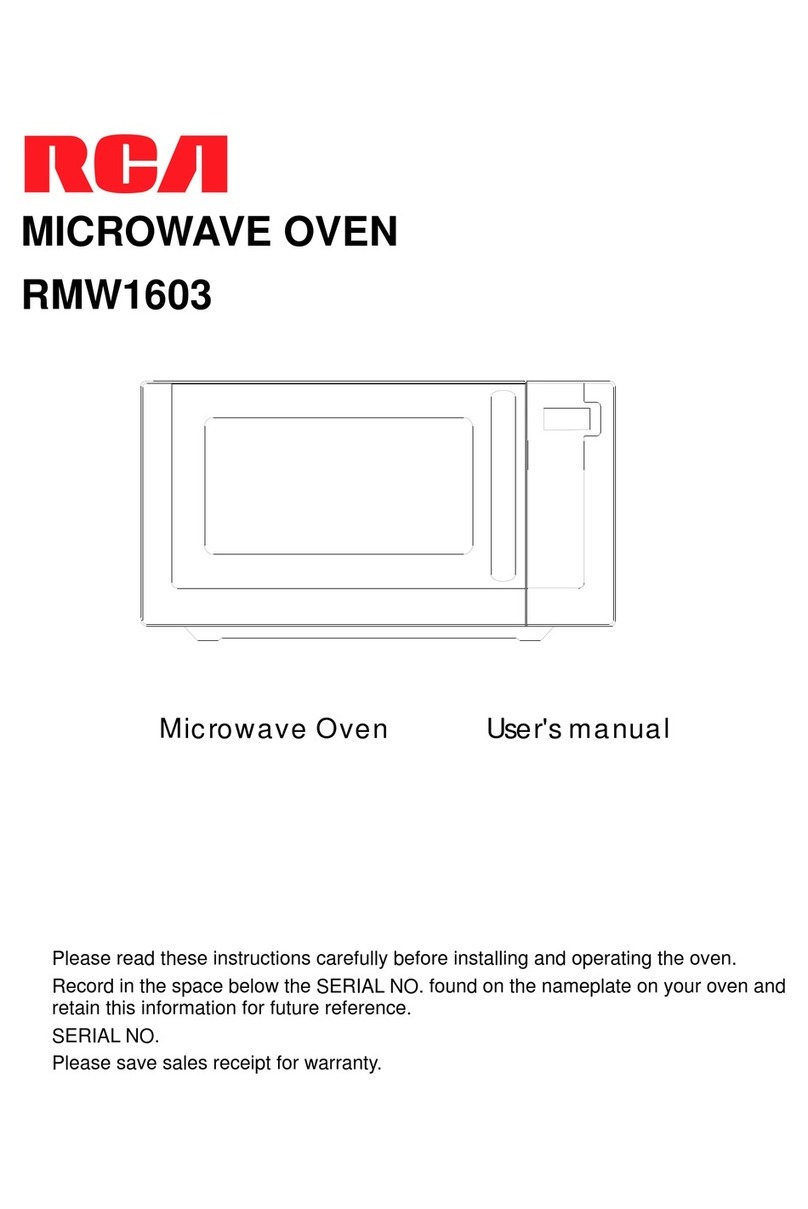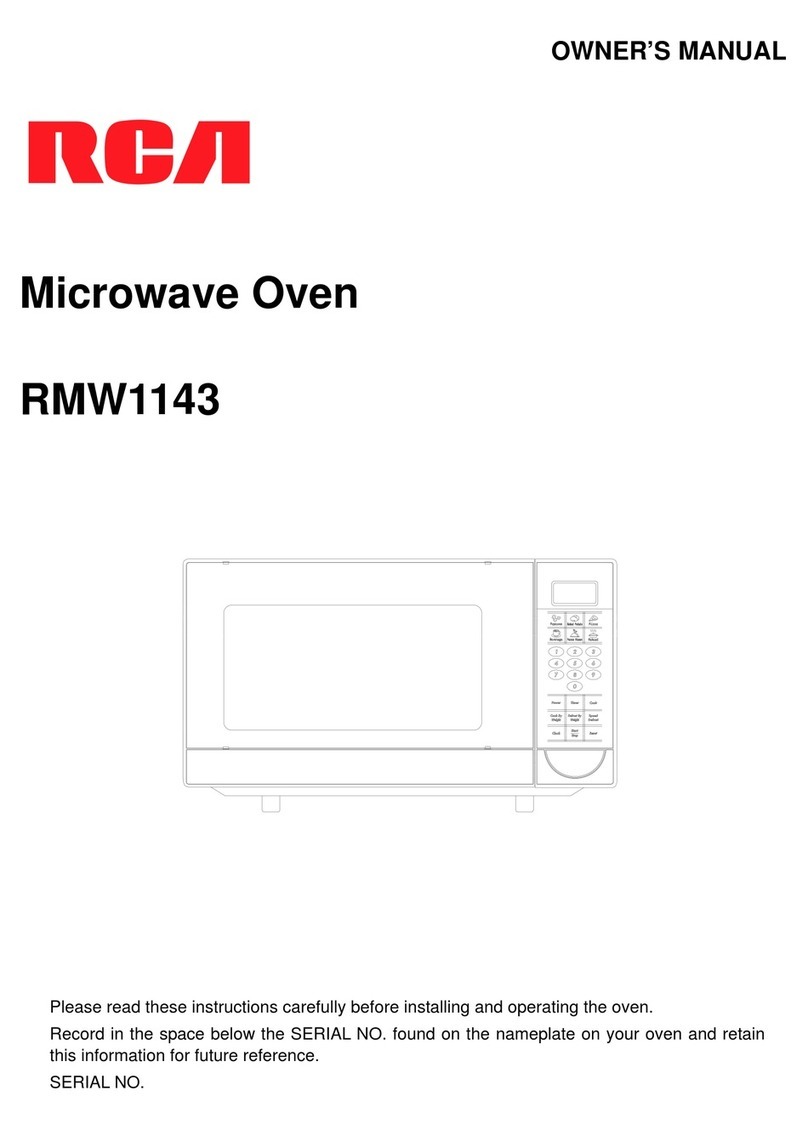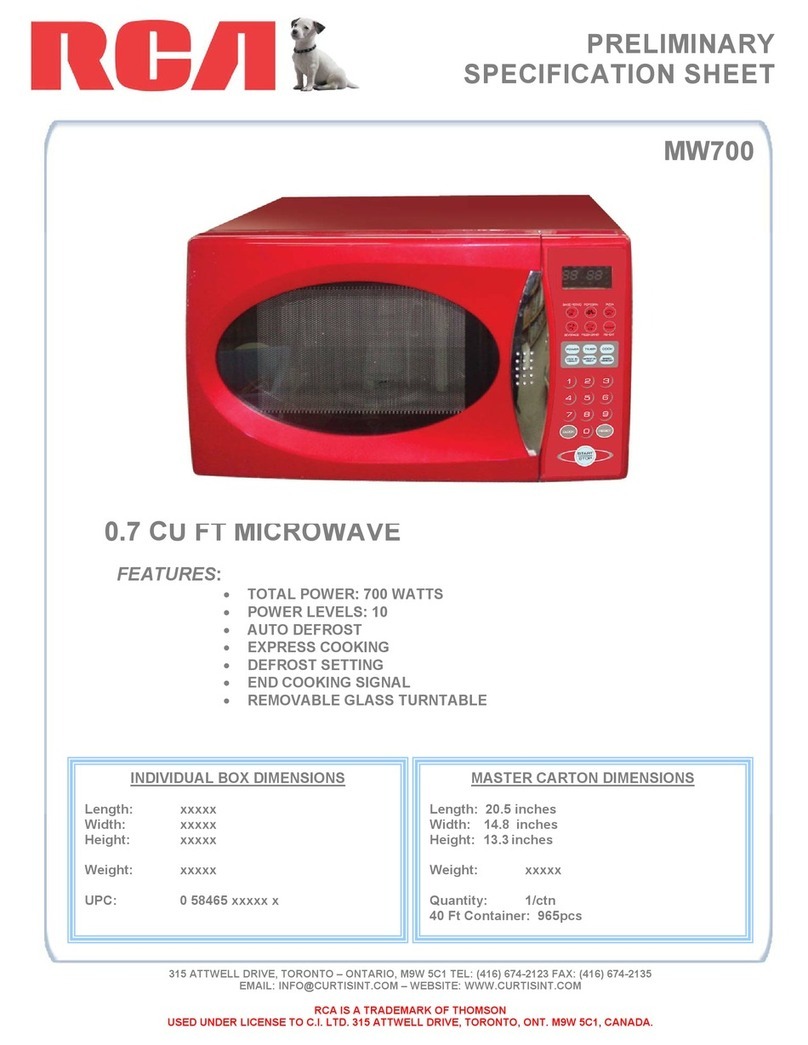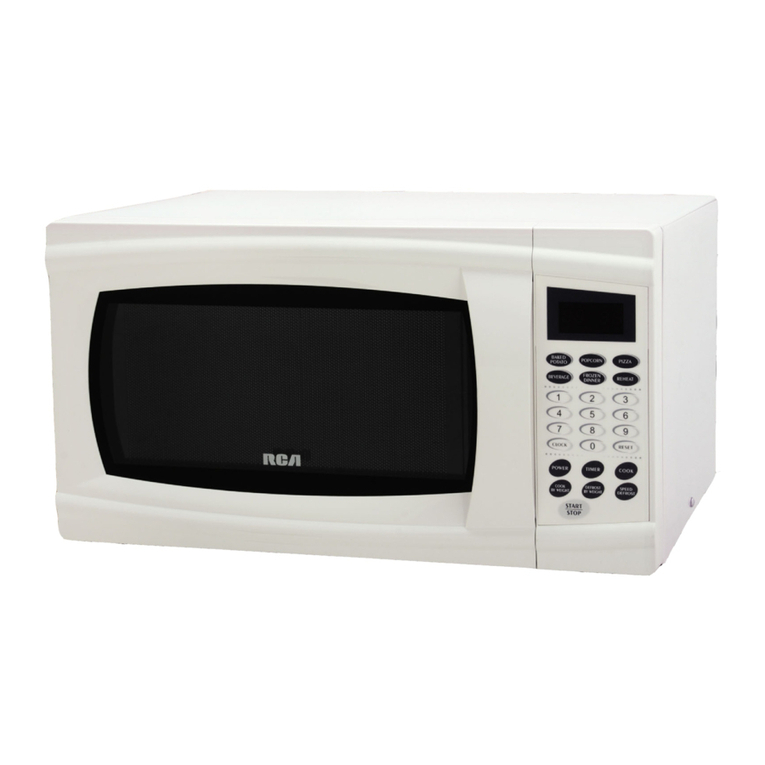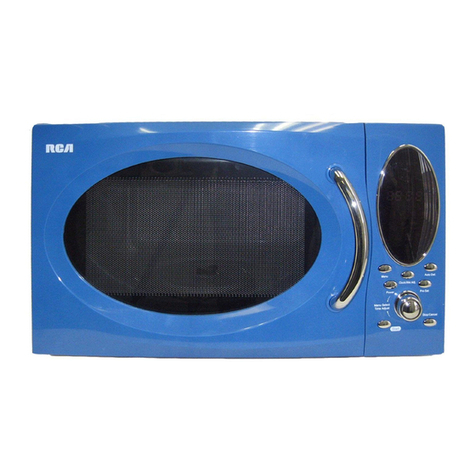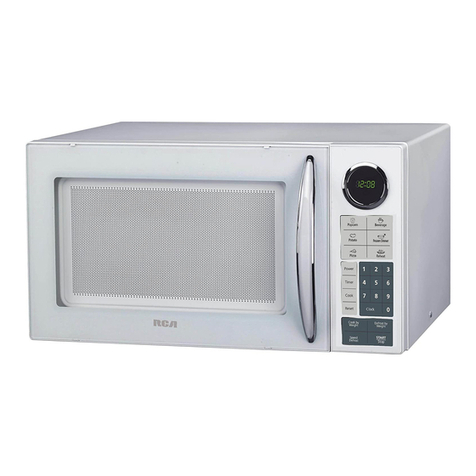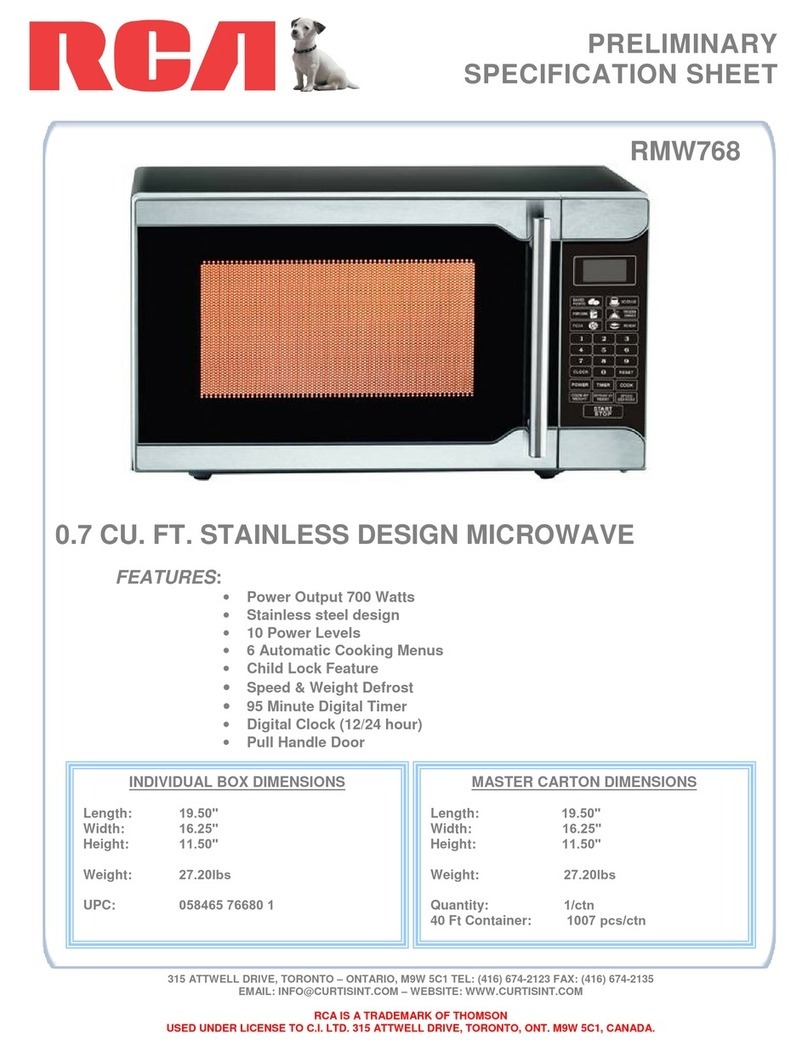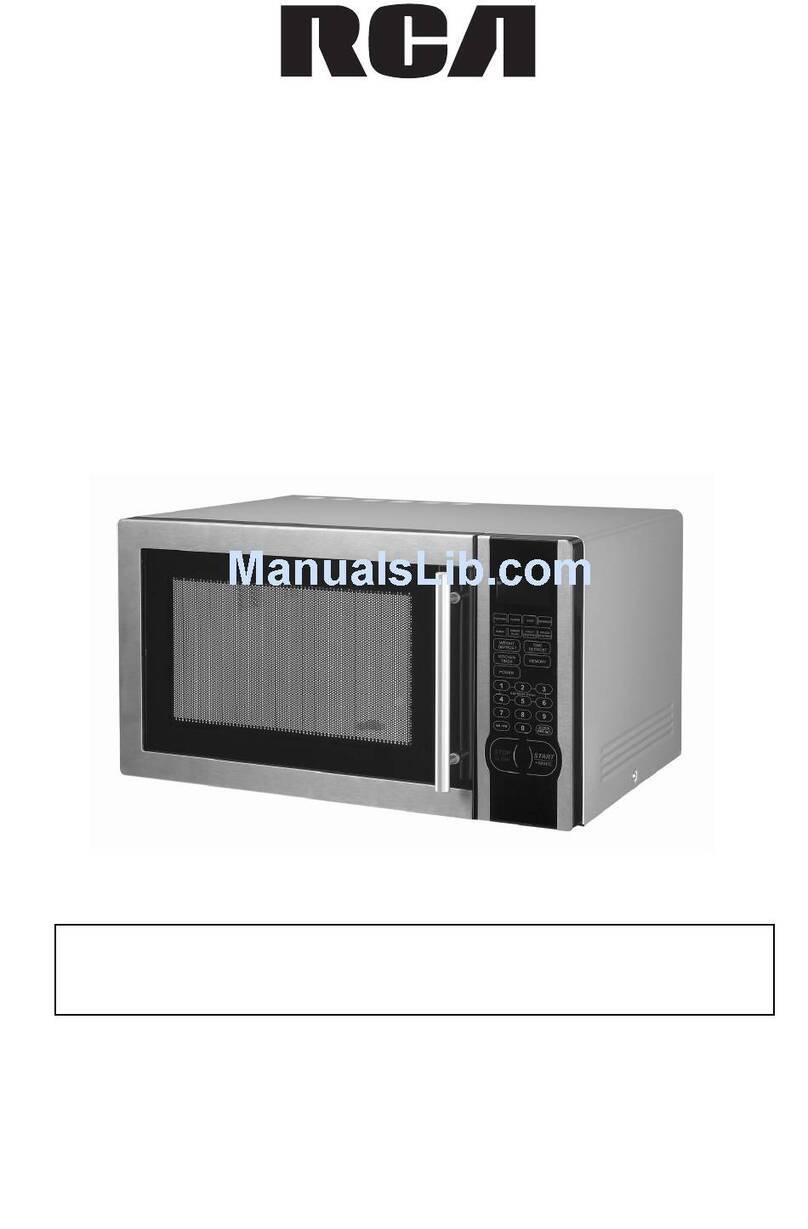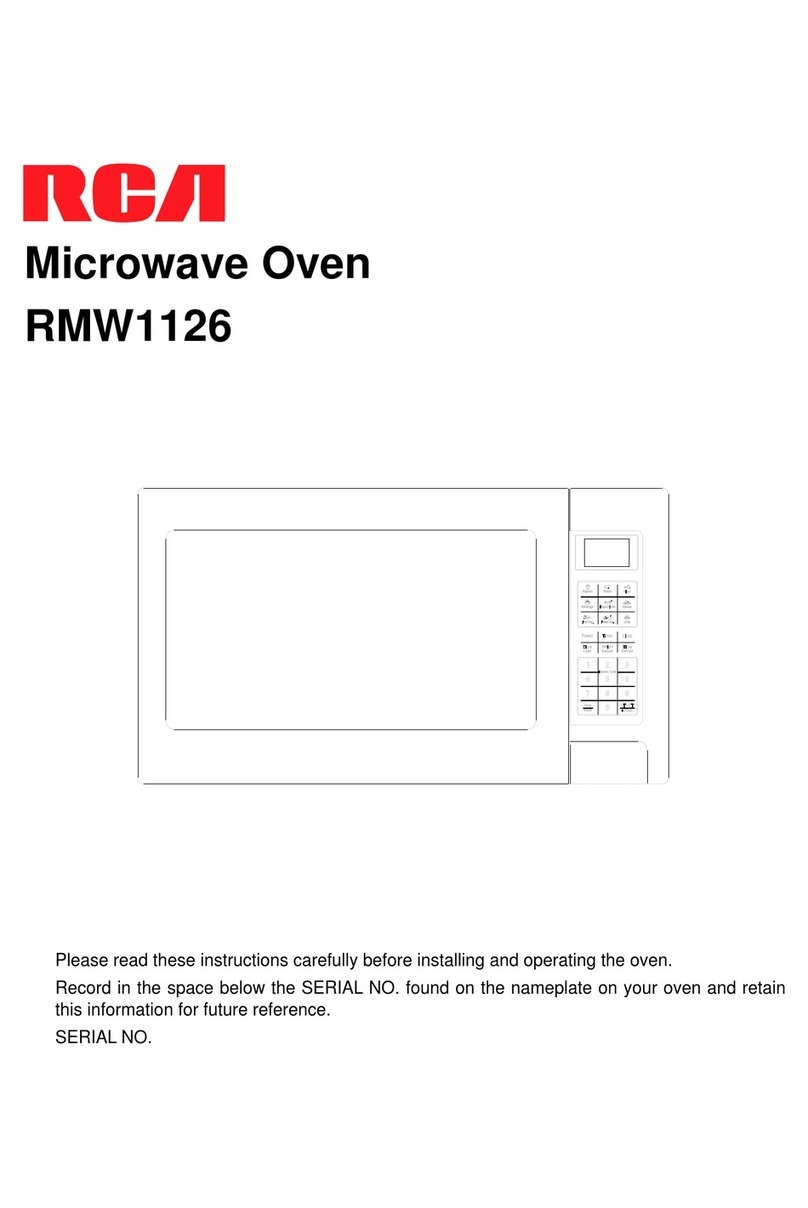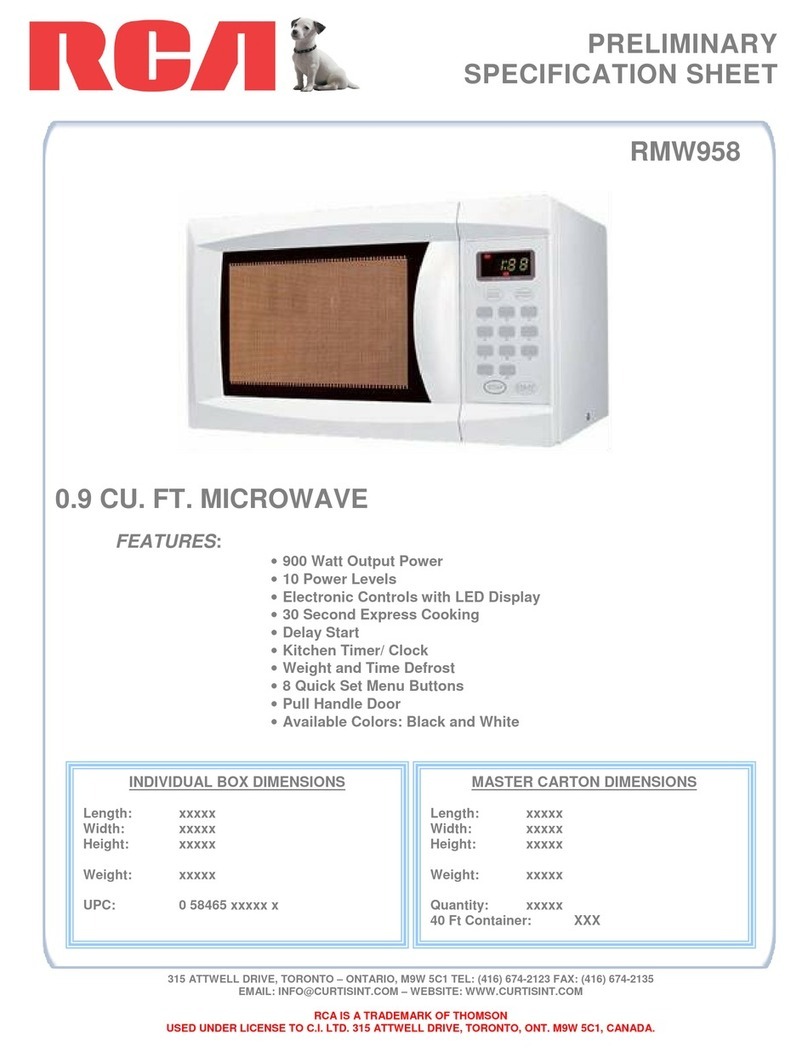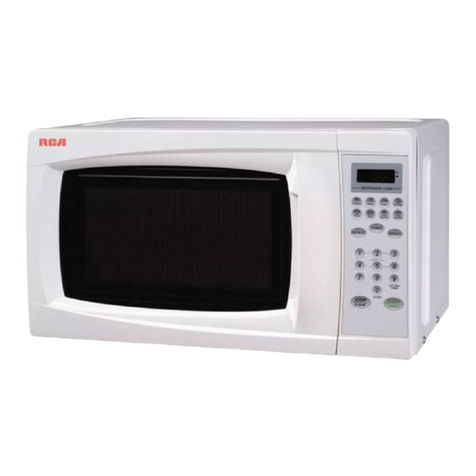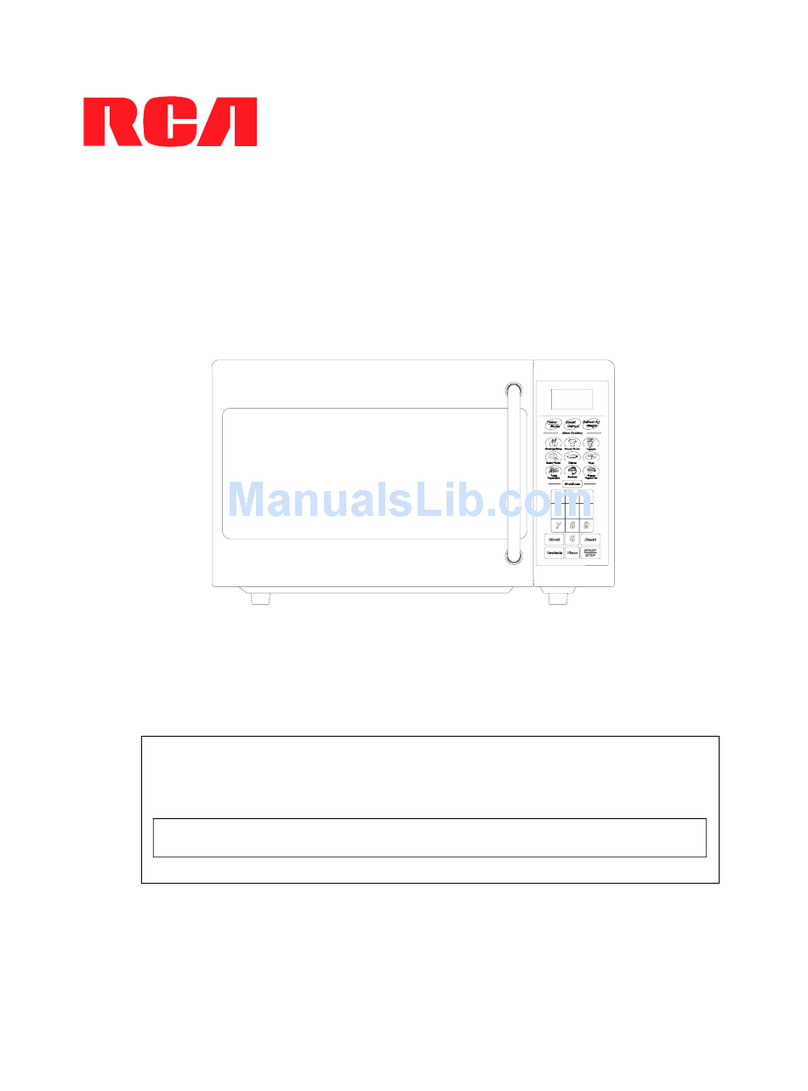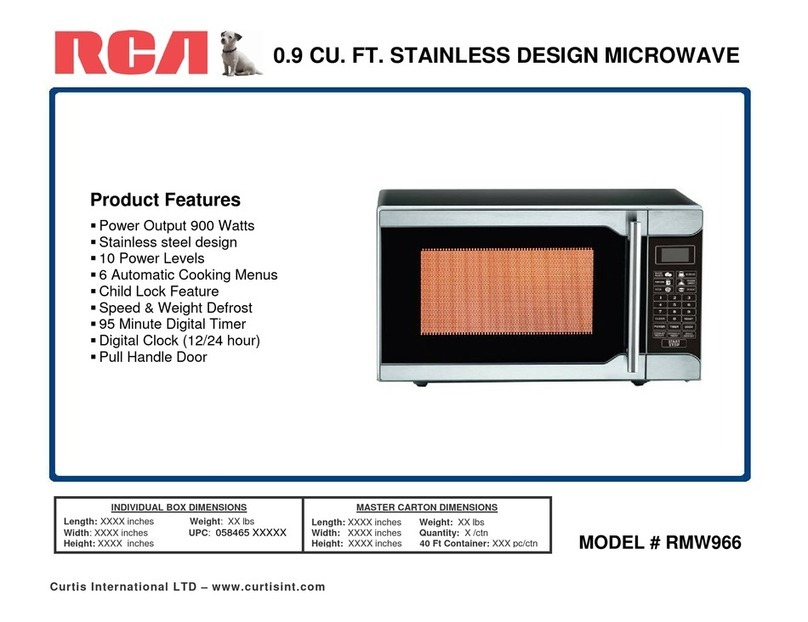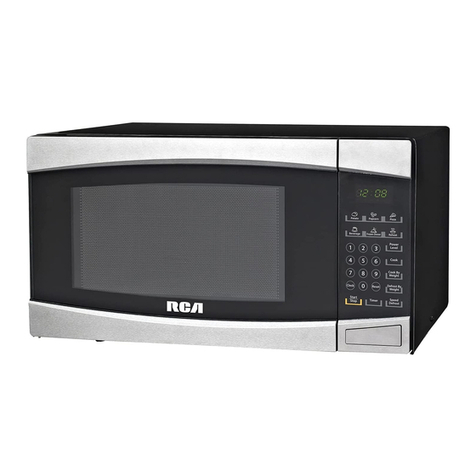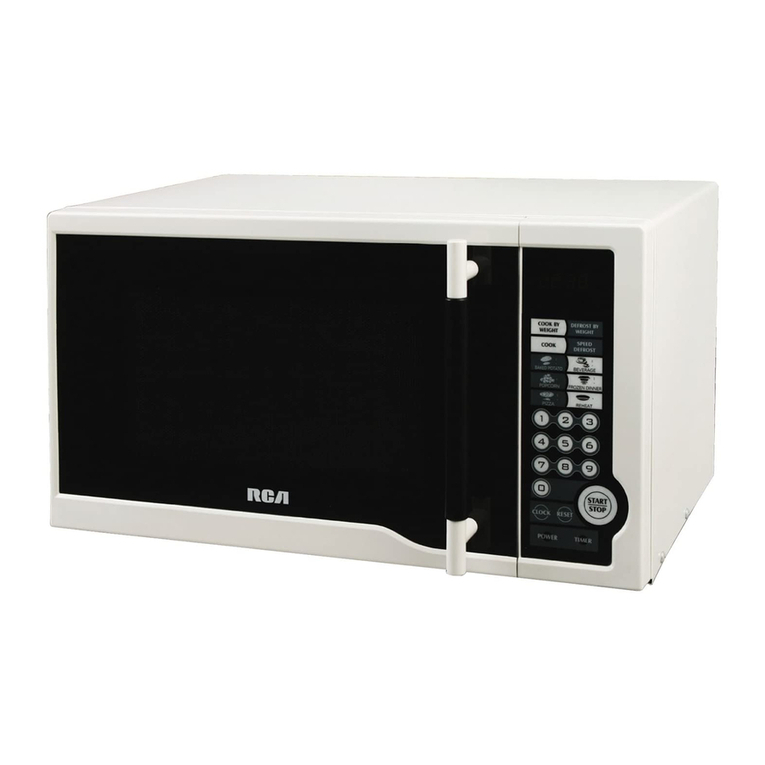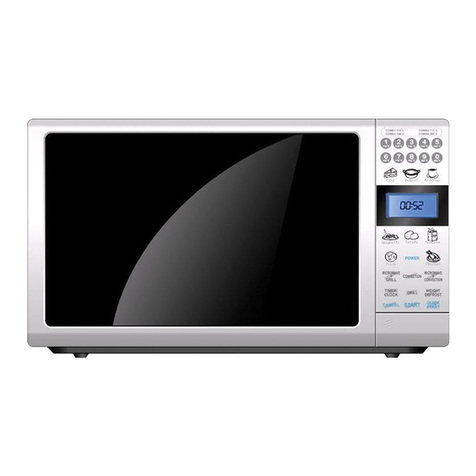SAVE THESE INSTRUCTIONS
2
IMPORTANT SAFETY INSTRUCTIONS
When using electrical appliances, basic safety
precautions should be followed, including the
following:
WARNING - To reduce the risk of burns, electric
shock, fire, injury to persons or exposure to
excessive microwave energy:
1. Read all instructions before using the
appliance.
2. Read and follow the specific
"PRECAUTIONS TO AVOID POSSIBLE
EXPOSURE TO EXCESSIVE MICROWAVE
ENERGY" on page 1.
3. This appliance must be grounded. Connect
only to properly grounded outlet. See
"GROUNDING INSTRUCTIONS" on page 4.
4. Install or locate this appliance only in
accordance with the provided installation
instructions.
5. Some products such as whole eggs and
sealed containers -for example, closed glass
jars- are able to explode and should not be
heated in this oven.
6. Use this appliance only for its intended use
as described in this manual. Do not use
corrosive chemicals or vapors in this
appliance. This type of oven is specifically
designed to heat, cook, or dry food. It is not
designed for industrial or laboratory use.
7. As with any appliance, close supervision is
necessary when used by children.
8. To reduce the risk of fire in the oven cavity:
a. Do not overcook food. Carefully attend
appliance when paper, plastic, or other
combustible materials are placed inside the
oven to facilitate cooking.
b. Remove wire twist-ties from paper or plastic
bags before placing bag in oven.
c. If materials inside the oven should ignite,
keep oven door closed, turn oven off, and
disconnect the power cord or shut off power
at the fuse or circuit breaker panel.
d. Do not use the cavity for storage purposes.
Do not leave paper products, cooking
utensils or food in the cavity when not in use.
9. Liquids, such as water, coffee, or tea are able
to be overheated beyond the boiling point
without appearing to be boiling due to surface
tension of the liquid. Visible bubbling or
boiling when the container is removed from
the microwave oven is not always present.
THIS COULD RESULT IN VERY HOT
LIQUIDS SUDDENLY BOILING OVER
WHEN A SPOON OR OTHER UTENSIL IS
INSERTED INTO THE LIQUID. To reduce the
risk of injury to person:
a. Do not overheat the liquid.
b. Stir the liquid both before and halfway
through heating it.
c. Do not use straight-sided containers with
narrow necks.
d. After heating, allow the container to stand in
the microwave oven for a short time before
removing the container.
e. Use extreme care when inserting a spoon or
other utensil into the container.
10. Do not heat oil or fat for deep-frying. It is
difficult to control the temperature of oil in
microwave oven.
11. Pierce foods with heavy skins such as
potatoes, whole squash, apples and
chestnuts before cooking.
12. The contents of feeding bottles and baby jars
should be stirred or shaken and the
temperature should be checked before
serving in order to avoid burns.
13. Cooking utensils may become hot because of
heat transferred from the heated food.
Potholders may be needed to handle the
utensil.
14. Do not cover or block any openings on the
appliance.
15. Do not store or use this appliance outdoors.
Do not use this product near water, for
example, near a kitchen sink, in a wet
basement, near a swimming pool, or similar
locations.
16. Do not operate this appliance if it has a
damaged cord or a plug, if it is not working
properly or if it has been damaged or
dropped.
17. Do not immerse cord or plug in water. Keep
cord away from heated surface. Do not let
cord hang over edge of table or counter.






